

Sagrada Familia
name: sagrada familia
location: barcelona (spain) built: 1882 notes: still under construction
Hola niños, my name is Antoni Gaudí and I am muy feliz to show you one of my most extraordinary works. To be honest, the idea of building a big church dedicated to the Holy Family wasn’t mine. A Spanish philanthropist dreamed it up. In 1881, he bought an entire city block in Barcelona for 172,000 pesetas, raising the money through donations from devotees. His intention was to use the site to build a grand spiritual temple and consequently asked an architect to work on the project. The following year, the first stone was laid. However, it wasn’t long before the two started to disagree. That is when I was asked to continue
number of years gaudí spent working on the church: 43 number of façades: 3 number of towers: 18 average number of tourists per year: 3.2 million
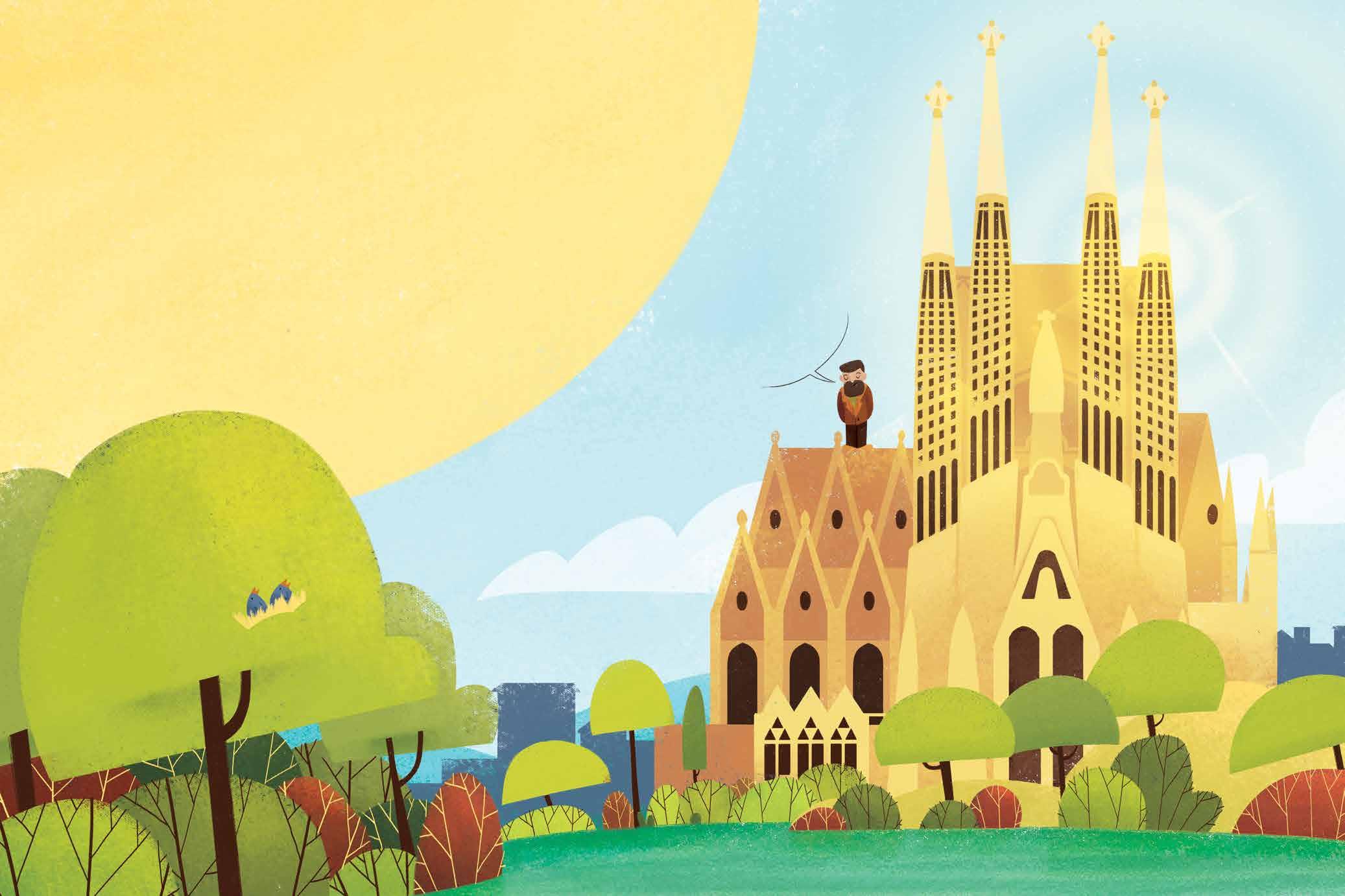
the project. I was 31 at the time. Despite having worked on many other buildings around the city, my favorite is still the Sagrada Familia. It’s the one that I spent every free moment of my life improving.
Everything I created was inspired by nature, specifically the kind that surrounded the mountain village where I used to spend my summers as a kid. I understood that trees, animals, leaves, and clouds didn’t necessarily have traditional architectural shapes, and yet they still held their forms very well. So why shouldn’t it be the same with architecture?

Palace of Versailles
location: versailles (france) area: 720,000 sq ft (67,121 sqm)
number of men hired to build it: 30,000
Bienvenue au Château de Versailles, everyone!
You’re in the presence of King Louis XIV. I am very glad that you have accepted my invitation to visit my magnificent residence near Paris. Oh, apologies for all these renovations! I always have big projects in mind and there’s always something new to build here! Have you seen the gardens? They’re an endless, lusciously green stretch of land dotted with caves and fountains, and in the distance there you can see trees surrounding a long canal.
gardens area: 2.5 acres (700 hectares) water sources: 55
length of piping: 21.7 mi (35 km)
Don’t you find it trèsmagnifique?
And you haven’t even seen the palace yet! There are 700 rooms, 2,513 windows, 1,252 fireplaces, and 67 staircases. I almost forgot about the mirrors! Where the old balcony of Louis XIII was located, I built a huge hall where all the mirrors reflect the seventeen arcaded windows that overlook the gardens.
Impossible? Oh no, nothing is impossible for the great Sun King!

A billionaire palace
It has been estimated that during the Ancien Régime, the French monarchs spent almost two billion dollars (by today's standards) on Versailles.
Unpleasant smells
Personal hygiene was not a big priority in the time of Louis XIV. Under many ladies’ elaborate hairdos, there were often entire populations of lice. And that’s not all: instead of using toilets, many preferred nearby gardens, rivers, or even the spaces underneath staircases. All this certainly made the air around Versailles unpleasant.
The war of mirrors
During Louis XIV’s reign, Venice held the monopoly on glass mirrors and greedily kept the secret to their production. Even though traitors were severely punished (allegedly, some were even poisoned), the Sun King managed to convince a few glass craftsmen to flee to Paris and build the magnificent Hall of Mirrors.

Versailles was a great inspiration for many European monarchs throughout the centuries. Ludwig II of Bavaria, for example, had a true admiration for the palace and for the Sun King. If you want to know more about Ludwig II and his incredible castles, go to page 28.
Animals in the court
Cows, horses, and goats were led through the Hall of Mirrors every morning on their way to the royal apartments. They went there to make sure that the daughters of Louis XV, the successor to the Sun King, could always drink fresh milk.
A restaurant on trees
With its 36 acres of ground, Alnwick is a true wonderland! Among its many extravagant attractions are a large tree house with a souvenir shop and restaurant, and a special garden meant for poisonous plants only!
Flying lesson
Alnwick even offers broomstick training! You can learn to fly a broom in the same place where Harry Potter first discovered his talents in the movie Harry Potter and the Philosopher’s Stone. Wizarding professors show you all the tricks, and I’m sure the activity makes for some great photos!
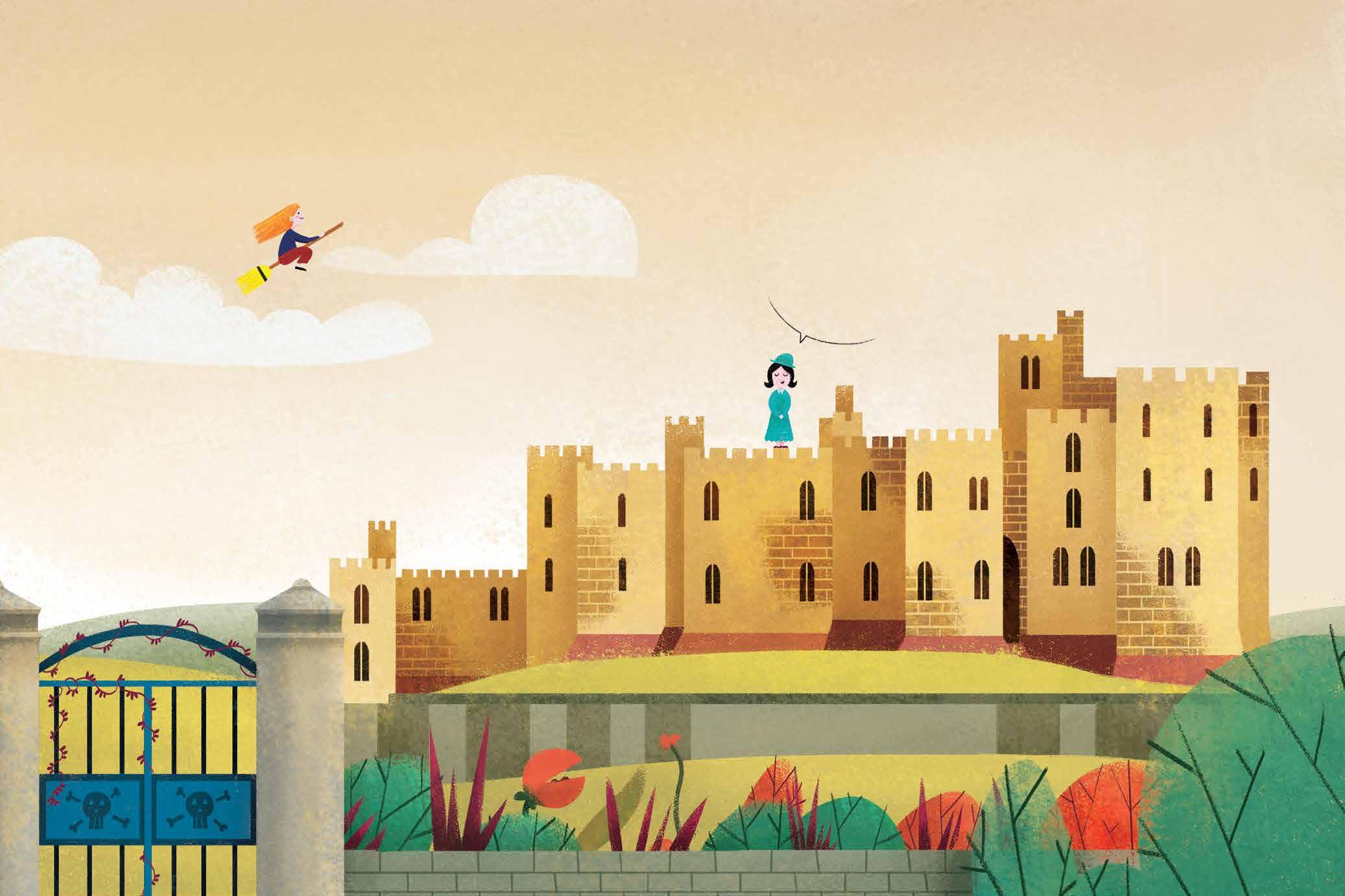
Do you like movies? If you want to learn about another monument featured in a famous movie franchise, go to page 60.
These plants can kill you
Created by Duchess Jane Percy for educational purposes, the Poison Garden holds over 100 species of toxic plants, from the exotic brugmansia to the common laurel. Tourists can visit the garden, but they have to follow a few very strict rules: don’t pick, taste, or smell any plant! In 2014, a few visitors broke these rules and wound up fainting in the park.
Lady Grey's ghost
Like any respectable castle, Alnwick has its own ghost. According to legend, it’s the ghost of a poor servant who fell down the chute of the service elevator while working in the kitchens!
Saint Mary's Basilica
name: saint mary's basilica location: krakow (poland) built: 13th century
Dzień dobry everyone! My name is Jan Kołton, and right now I’m talking to you from the top of one of the two towers of the stunning Saint Mary’s Basilica. If you’re curious about what I’m doing up here, you’ll have to follow me on a journey through time, all the way back to the 13th century, when the church was built. At that time, our beautiful city attracted many hordes of bloodthirsty enemies. In order to prevent an attack, the municipal authorities ordered that a lookout be posted night and day on the tallest tower of the church. One day, in 1240, as the first rays of dawn were becoming visible over the city, the Tatars attempted a daring raid, but the lookout spotted them in time and blew a trumpet to raise the alarm. The attackers were pushed back, but unfortunately one arrow struck the lookout, who still managed to play one last note on his trumpet. The man was buried with great honors, and today we trumpeters still remember and pay homage to him from up here by chiming the hours with the hejnal, the same trumpet melody that once saved the city.
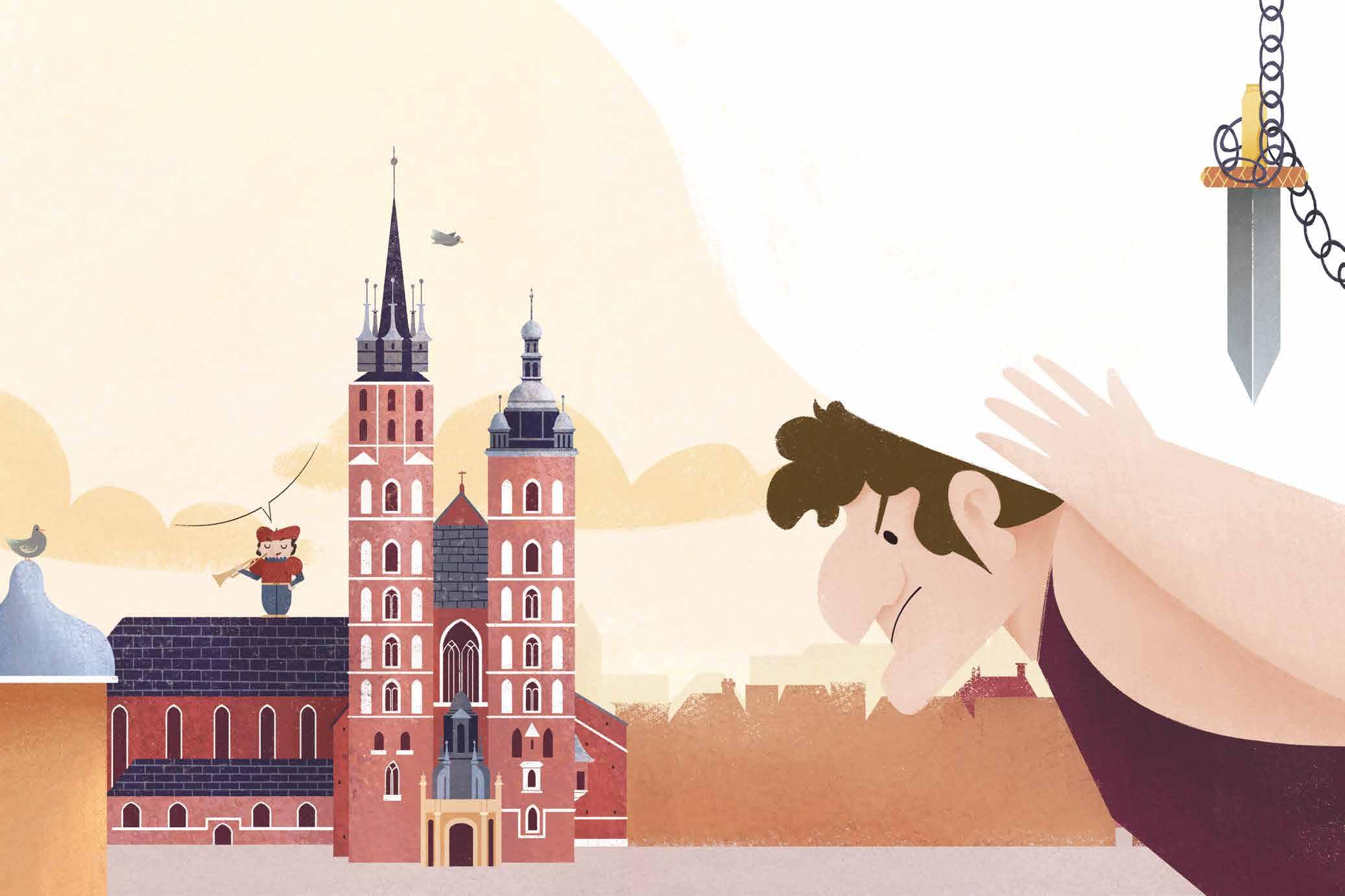
height of watch tower: 266 ft (81 m)
height of bell tower: 226.3 ft (69 m)
number of bells: 5
Hard work
Jan Kołton played the hejnal on the tower for 33 years, his father for 35, while his son is one of the seven current trumpeters. Each one plays the hejnal four times every hour, in honor of the four cardinal points: north, south, east, and west. After a 24-hour shift, the trumpeter climbs down the 272 steps of the tower and takes a 48-hour break. In the past, when there was no internal staircase, it would take the trumpeters a whole hour just to climb up or down from the tower. That’s why they often decided to sleep up there!
Why do the towers of the Basilica have different heights?
When the church was built, the construction of the towers was assigned to two brothers. The older one finished the job first. However, in a burst of jealousy towards his younger brother, he killed him. After the murder, he felt so guilty that he took his own life. The knife used for the killing is still hanging on a chain in the vault of the market in front of the church. Along with the asymmetric towers, the knife is a reminder of the ill-fated effects of jealousy.
Interested in more legends? Then you might want to read about the statues of Charles Bridge in Prague! Go to page 38.

Hercules is Polish
According to legend, Stanislaw Ciołek, a man of extraordinary strength, carried one of the bells to the top of the tower all by himself. The bell weighed 0.7 tons (6.5 quintals)!

Builders or wizards?
For the construction of the Pyramid of Cheops, the biggest and most ancient of the three pyramids of Giza, they needed to use heavy stone blocks located at least 1.2 mi (2 km) from the building site. Such an extraordinary operation, happening over 4000 years ago, has sparked many elaborate theories. One theory suggests that the builders used magical sheets that allowed the stone blocks to levitate. Others believe aliens helped the builders accomplish the task. The most accredited theory is that special sledges were used to transport the blocks. Workers pulled the sledges, while others were tasked with pouring water on the sand in front of the sledges to reduce the friction. Plenty of mystery still remains about how the workers were able to accomplish such a miraculous architectural feat.
The mistery of the Sphinx
According to legend, a mysterious library lies underneath the Sphinx. This library is thought to house hundreds of papyruses containing all the knowledge of ancient Egypt, along with the real story behind the lost city of Atlantis. In fact, apart from being a major symbol of Egypt, the Sphinx is the guardian of great secrets. Its impenetrable gaze results in an inexplicable charm and even its nose hides a mystery: some believe it was broken by a cannonball, while others think it was struck by a sword. The truth is still unknown.
Robotic beetles
In order to explore the secret, narrow passages inside the Pyramids, some very sophisticated machines have to be used; these devices are equipped with miniature “beetles” that are able to pass through the tiniest holessome of which can be up to 0.8 in (2 cm) wide!
Smelly signals
The Great Wall was built to make communication between watchtowers easy. Apparently, soldiers would often send signals to each other by burning wolf feces. The feces was mixed with various herbs to create different types of smells, with each smell holding a different meaning.
Football comparisons
Throughout the centuries, the Great Wall has been destroyed, rebuilt, extended, and enhanced by the emperors of successive dynasties, all the way up to the Ming dynasty. Its official length, including towers, trenches, and forts, is 13,171 mi (21,196 km), similar to the distance between two opposite goal posts (that is, if we lined up 176,000 soccer fields!).
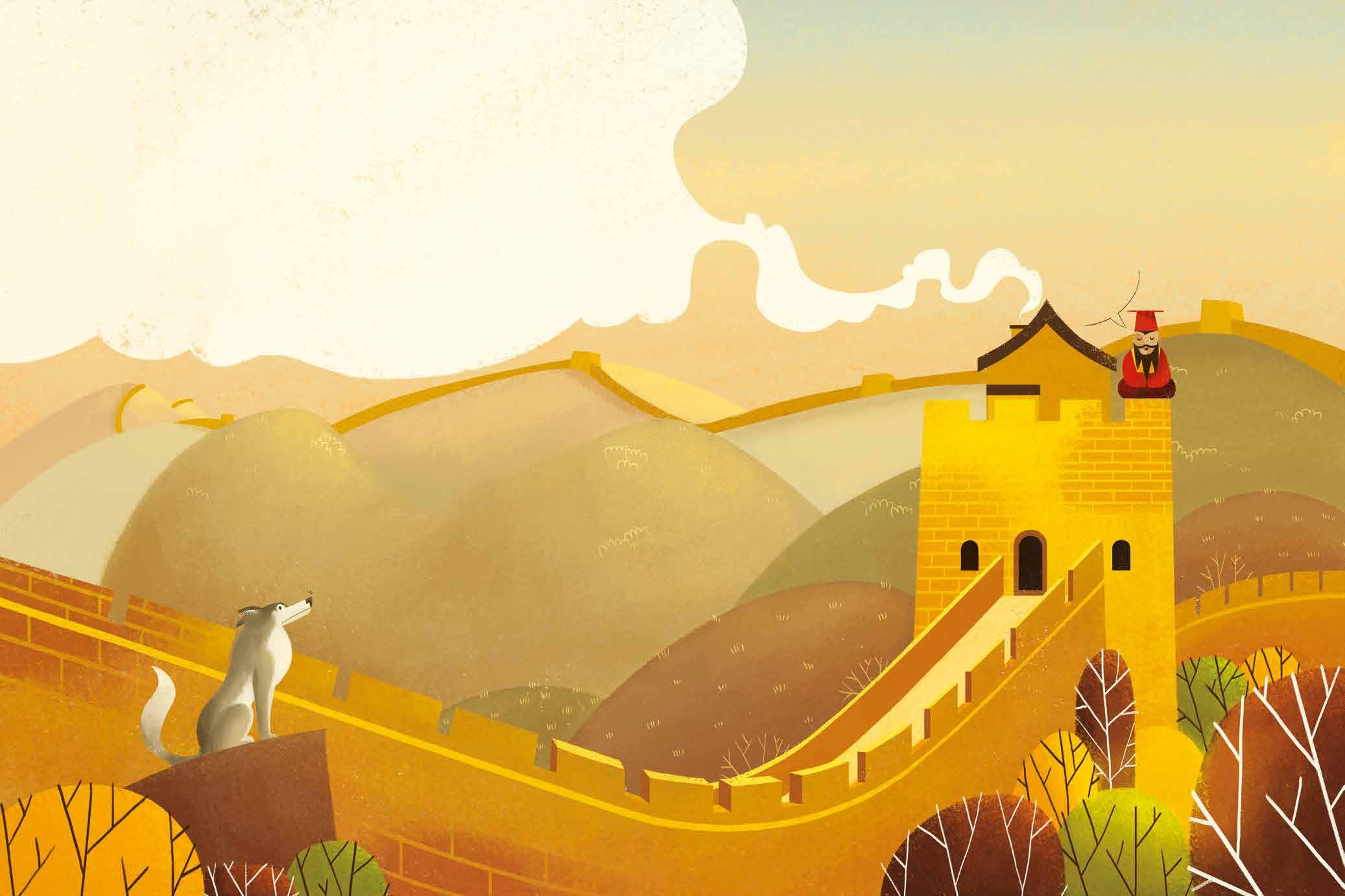
Speaking of walls, if you’re curious to know what the pink walls of Granada are hiding, go to page 12.
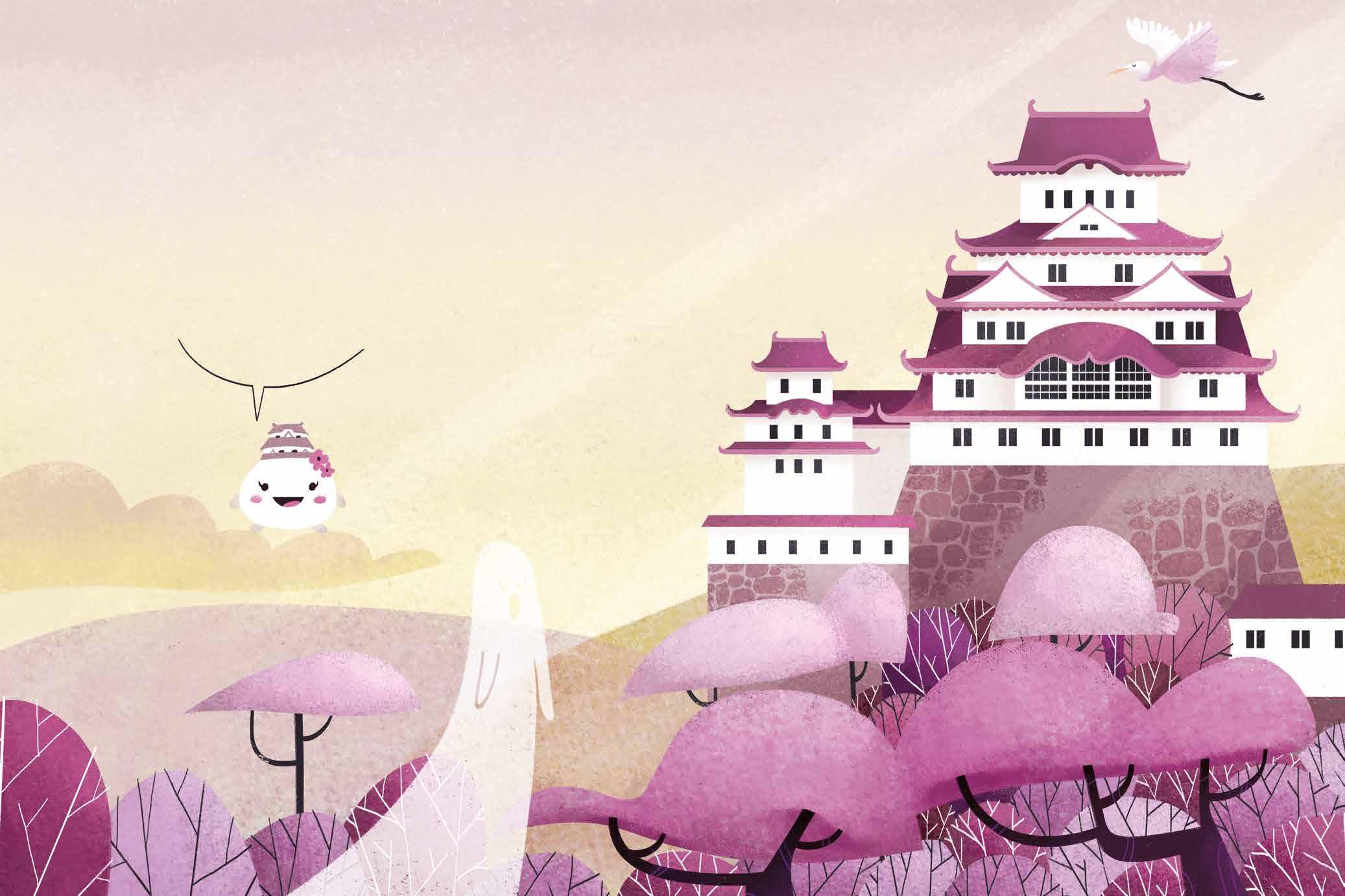
Hanami
Hanami is the popular Japanese tradition of welcoming spring. This annual celebration is about appreciating the temporal beauty of nature. People gather under blooming cherry blossoms for food, drink, songs, companionship, and the beauty of sakura (cherry blossoms). Himeji Castle attracts thousands of tourists between March and May for Hanami. Tourists come to see the castle surrounded in pink flowers, which make it look like a fairy-tale castle.
Imagine that Himeji Castle was truly a white heron capable of carrying you on a journey to anywhere in the world. Where would you like to go?
Open any page of the book or go to page 36.
